For all of its miles and miles of coastline, Panama City does not have a beach. By car, the nearest beaches are about 1.5 hours away in the Coronado area (we will be traveling there next year). By ferry, the nearest beach is half an hour away at Taboga Island. We look at the island from our apartment every day and can just see its picturesque little town through the binoculars. So, when one of our friends from Spanish class suggested we all go as a group to visit the island, we did.
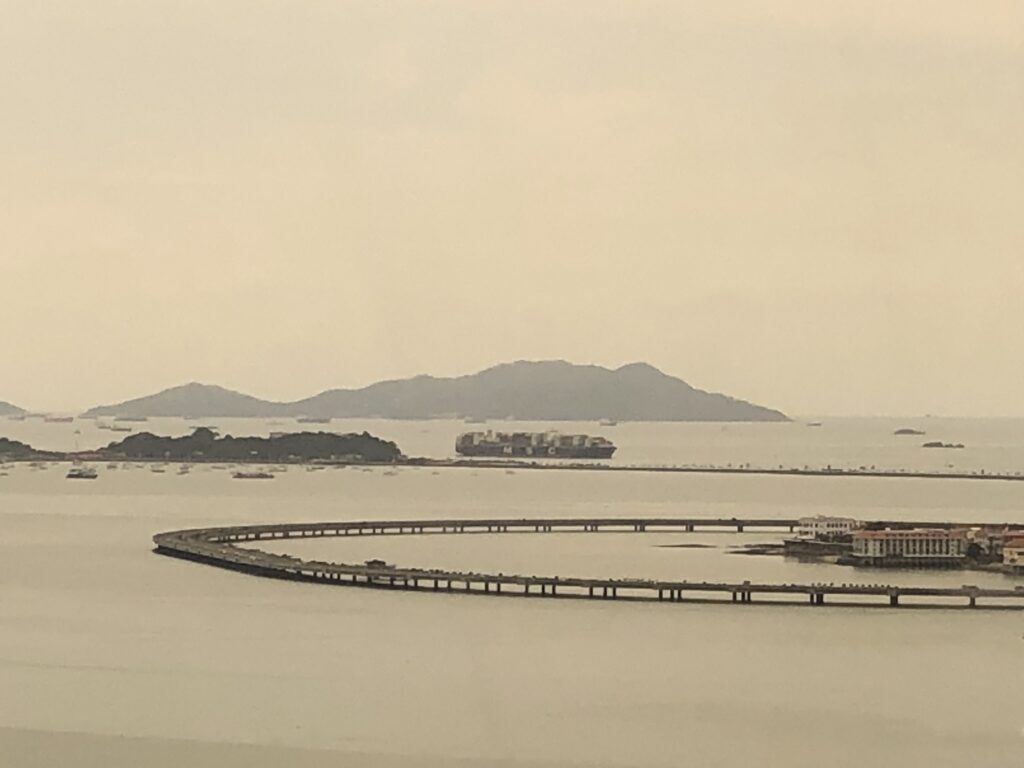
Taboga in the distance 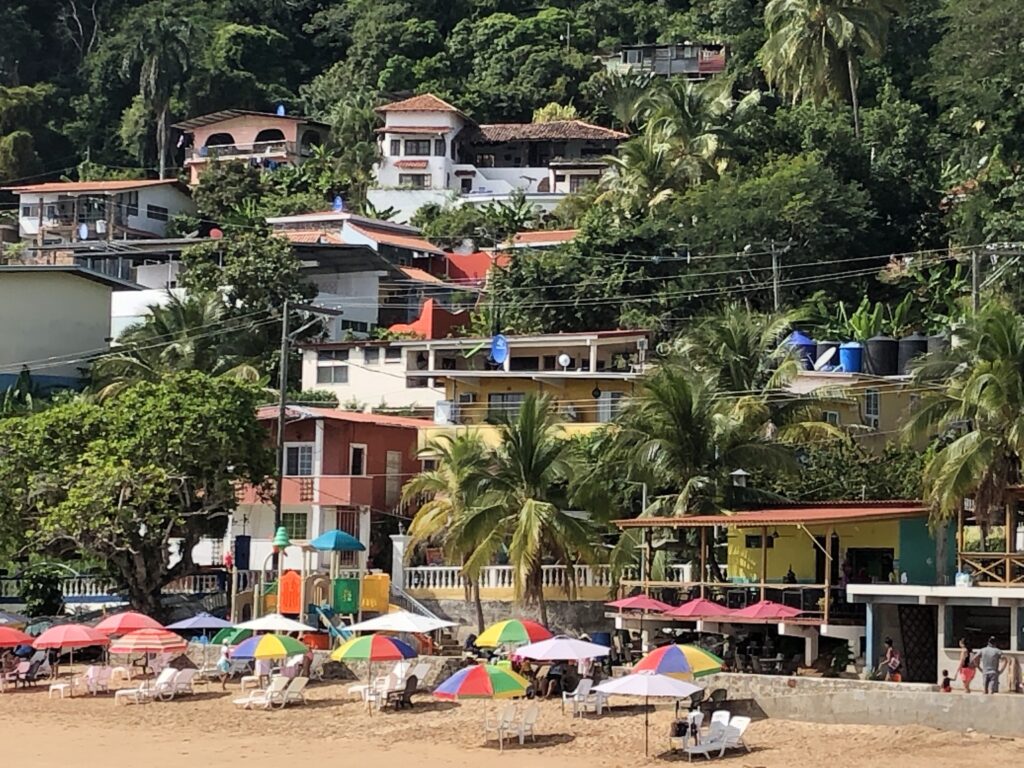
Quaint town in sunshine 
Quaint town in rain
Friends: The folks from our Spanish classes are an interesting group, and we’ve really enjoyed getting to know them. I’ll introduce you to them so you can get to know them, too. Amy is from New York, works in DNA technology, and is a world traveler. She spent two weeks in Panama, living with a local family, which can be arranged through our Spanish school. She ended up taking private Spanish lessons in the morning and the group class in the afternoon. Her head can hold more information than mine! The Taboga trip was her last adventure before she returns to life in NY, but we suspect we’ll see her again in some other Spanish-speaking country in the future. Simon and Hiedi are my age, retired, from Canada, and, like us traveling around and exploring the world. They also have three kids—girl, boy, girl—although their kids are older than ours and all live in one place. So, Simon and Hiedi spend six months a year living next to a golf course in Calgary (the warm months!) and the other six months exploring. Our “little brother,” Kevin, just joined the group this week. He was living with the same family as Amy and is always up for an adventure. He’s a software developer from Toronto and shares my fascination with and love of big ships.
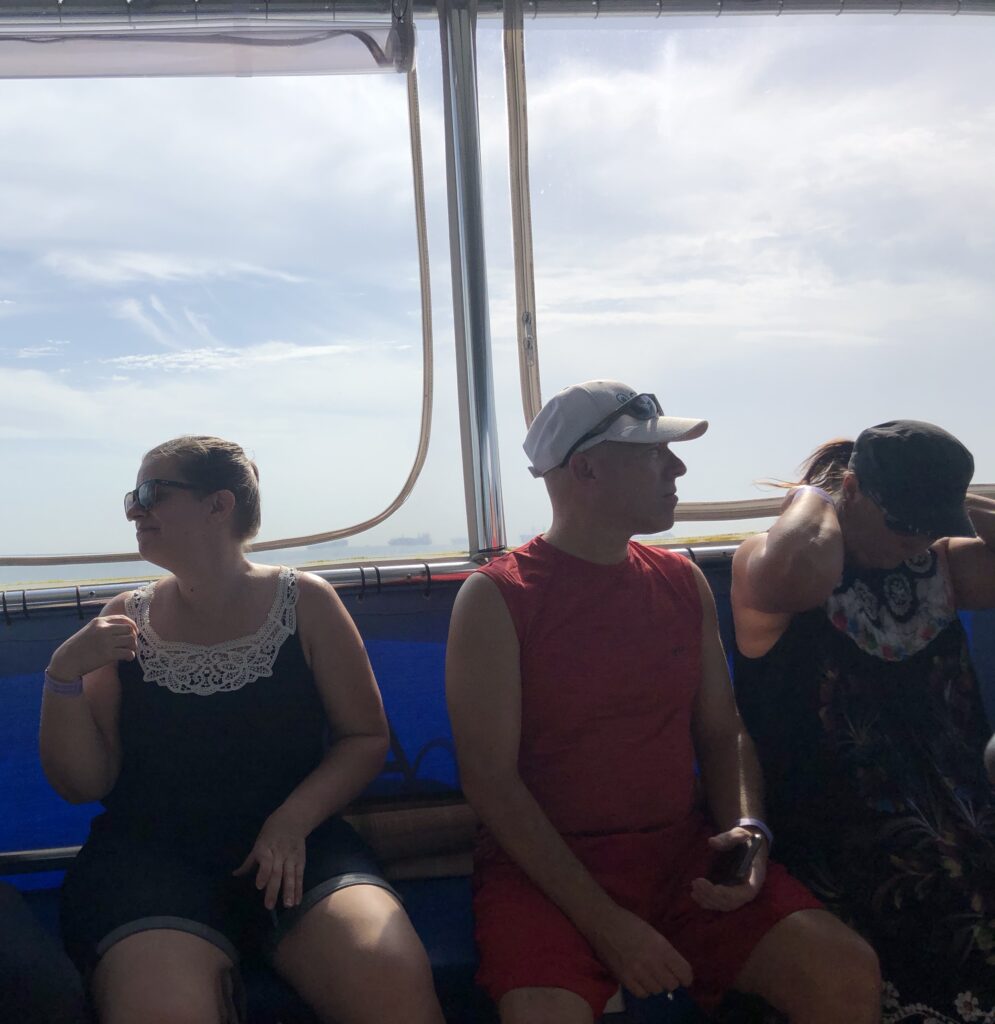
Ferry: We met early at the marina at the end of the Amador Causeway. The little boat, the Taboga Express Ferry, was full of relaxed, laughing, chatty people who carried everything from full coolers to suitcases (there are six hotels on the island) to a small grill. A couple of big golden retrievers came along, as did a little “dog” in a purse. The ride was quick, just a half hour, on the almost glass-smooth bay. The ferry threads its way through huge ships waiting to enter the Panama Canal and is a great ride.
History: Taboga means “abundant fish” in one of the local indigenous languages (not sure which one). Slaves from Nicaragua and Venezuela first settled the island in 1549. The little town on the island is San Pedro (pop. 1,700), which is also the name of one of the three hills and the church. When British pirate Henry Morgan invaded Panama (subject of an upcoming blog), he reportedly spent some time on Taboga, but his pirates apparently managed to drink all the alcohol without much other pillaging. The island’s most famous visitor was the French artist Paul Gauguin, who spent several weeks at the medical center while recovering from malaria. The U.S. had a military base on the island during World War II, but now it’s mostly a collection quaint homes built into the hill and beach shacks that sell really cold beer ($1 each) and really strong pina coladas and margaritas ($5 each), fresh fish, chicken, and burgers and fries.
Beach: We had a 5-minute walk to the beach past the $2 per day (includes a cold shower) banos, and Simon negotiated for an umbrella and some lounge chairs. I’m not sure what he paid, but it was fun to watch him use his newly learned Spanish to get what he thought was a fair deal (he plans to take four more weeks of classes!). The beach was clean with tan sand, beautiful shells, and a significant amount of sea glass, some of which is still sharp. (Glass is not allowed on the island, BTW.) It wasn’t very crowded, especially considering it was a holiday weekend. Some party boats were anchored in the cove with the big ships behind them, and let’s just say that U.S. regulations for the number of people on a party boat don’t apply to Panama.
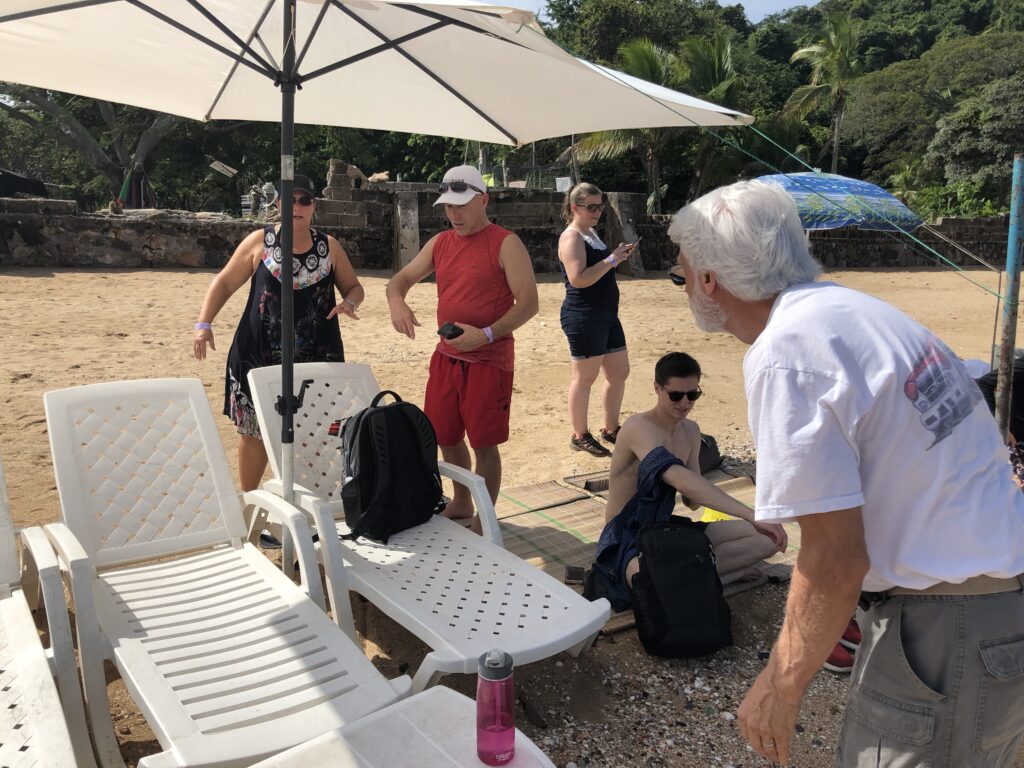
What Simon got 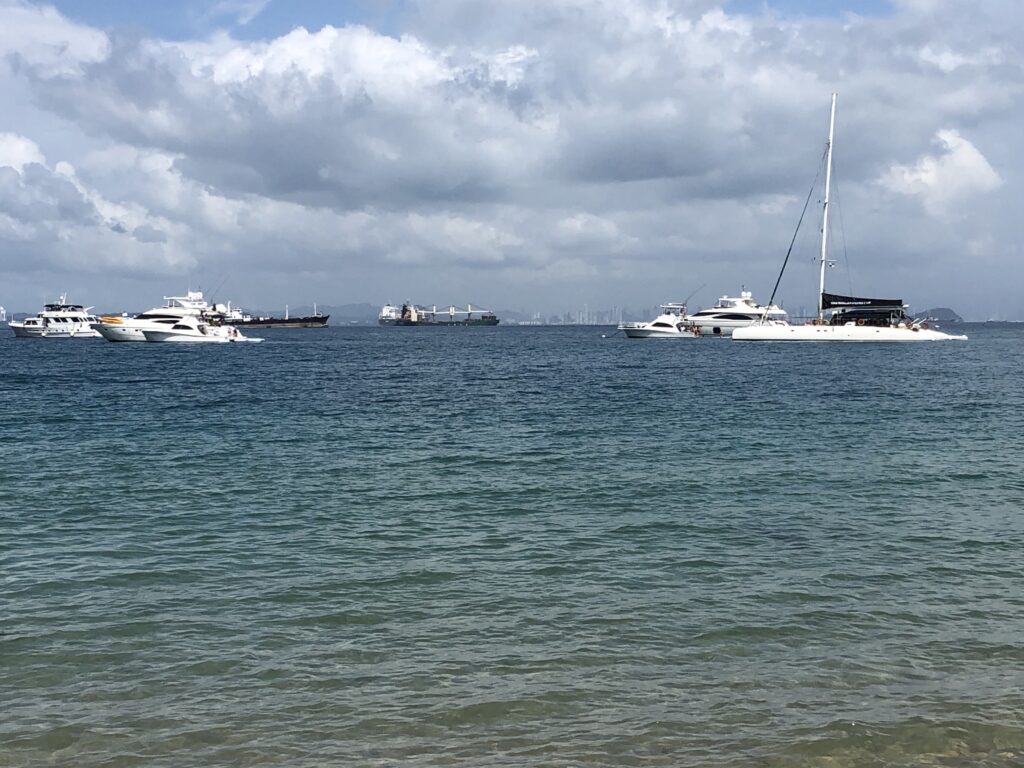
Party boats 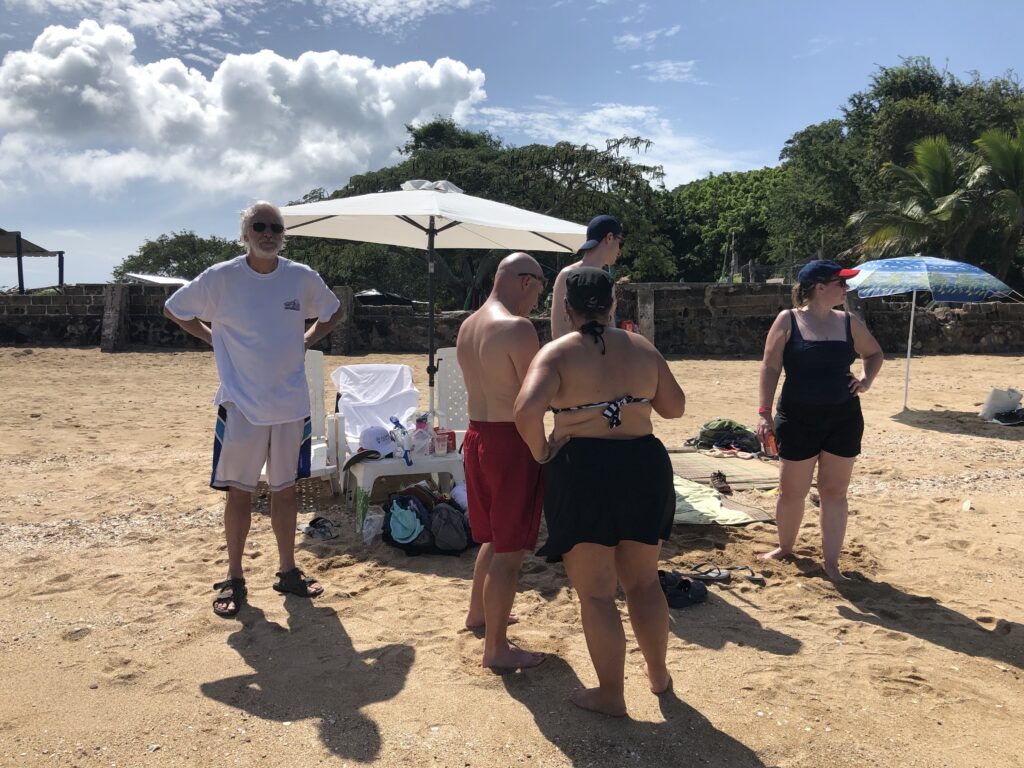
On the beach
Snorkeling: The snorkeling turned out better than I expected. The sandy bottom that ran straight out from the beach had many beautiful shells but few fish, just some little sand fish that kind of looked like the horned toads of New Mexico with fish tails. However, toward the left side of the beach, an interesting formation of volcanic rock drew many more critters: parrot fish, angel and butterfly fish, a huge school of little fish with yellow and gray stripes, a smaller school of large fish with yellow and gray stripes, a school of flat, silvery fish that kept cleaning their scales on a rock. It looked like some weird fish ritual. We did not bring our underwater camera on this excursion, which means no fish photos. As usual, I could have spent all day in the water, just hanging out watching fish, but had I done that, I would have missed some other great events.
Rain: As we were winding up our beach activities, the afternoon rainstorm let loose. It was a doozy! We spent most of it sheltered on the dock. The rain was so thick that we couldn’t see ships in the bay, much less the city on the mainland. We are still anticipating the start of the dry season.

Fauna: We saw, of course, many pelicans, which make their homes in the island trees. An osprey flew over us as we sat on the beach, and a long-tailed grackle tried to steal some cookies. A couple of feral chickens, quite common in Panama outside of the city, pecked around near the church. Waiting out the rain, we watched some good-sized blue and orange as well as small black crabs (congrejos) crawling around the rocks. Just as the storm abated, a yellow-crowned night heron landed nearby and posed for some photos. During the storm, the craziest great egret I’ve ever seen combed along the beach. We laughed as it strutted along in the rain, dodged waves, dived for fish, and looked slightly perplexed at everything going on around it, including a game of beach volleyball/soccer that local folks began playing in the sand when the storm started and all the gringos cleared off the beach.
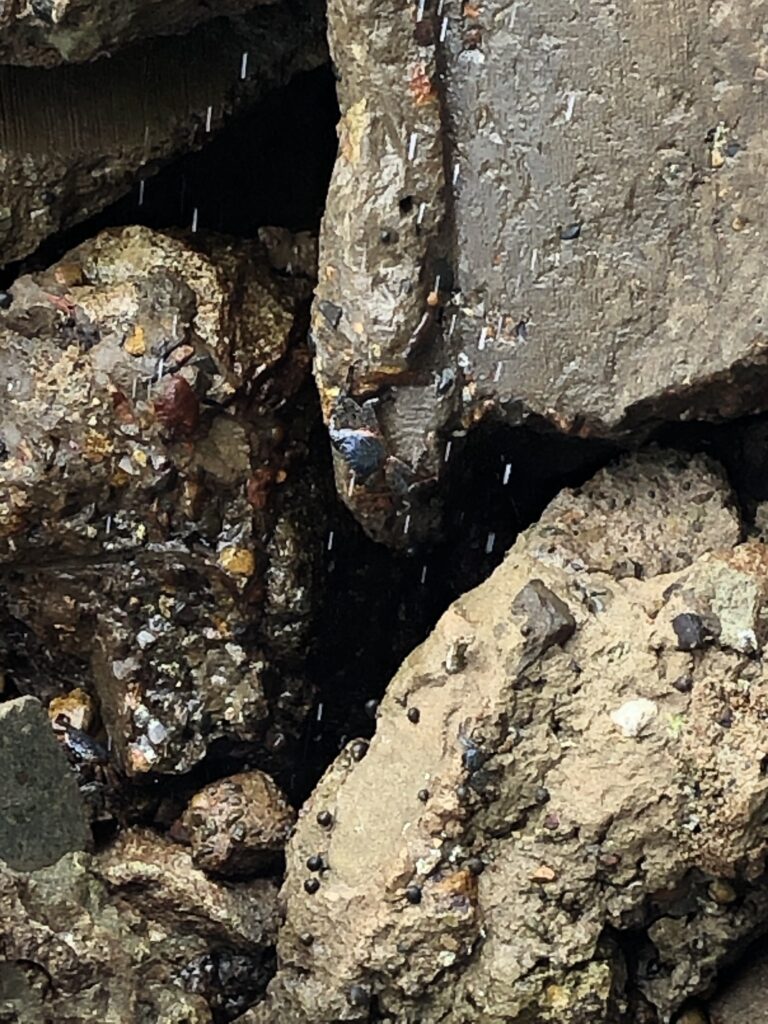
Congrejo (center) 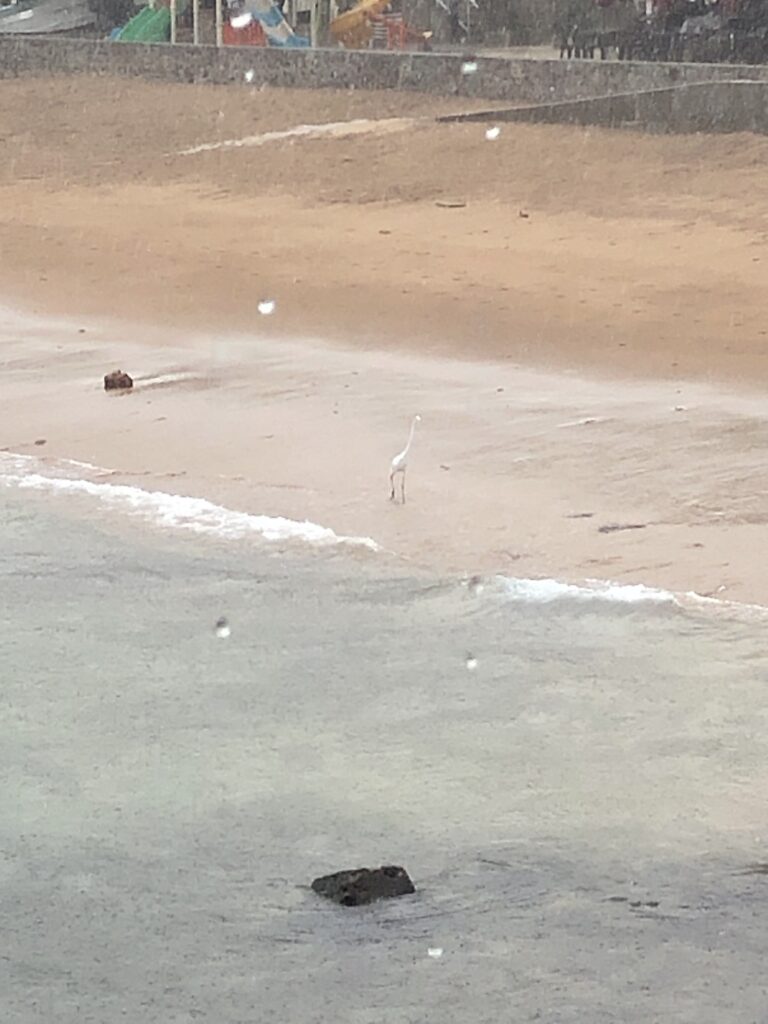
Crazy egret on the beach 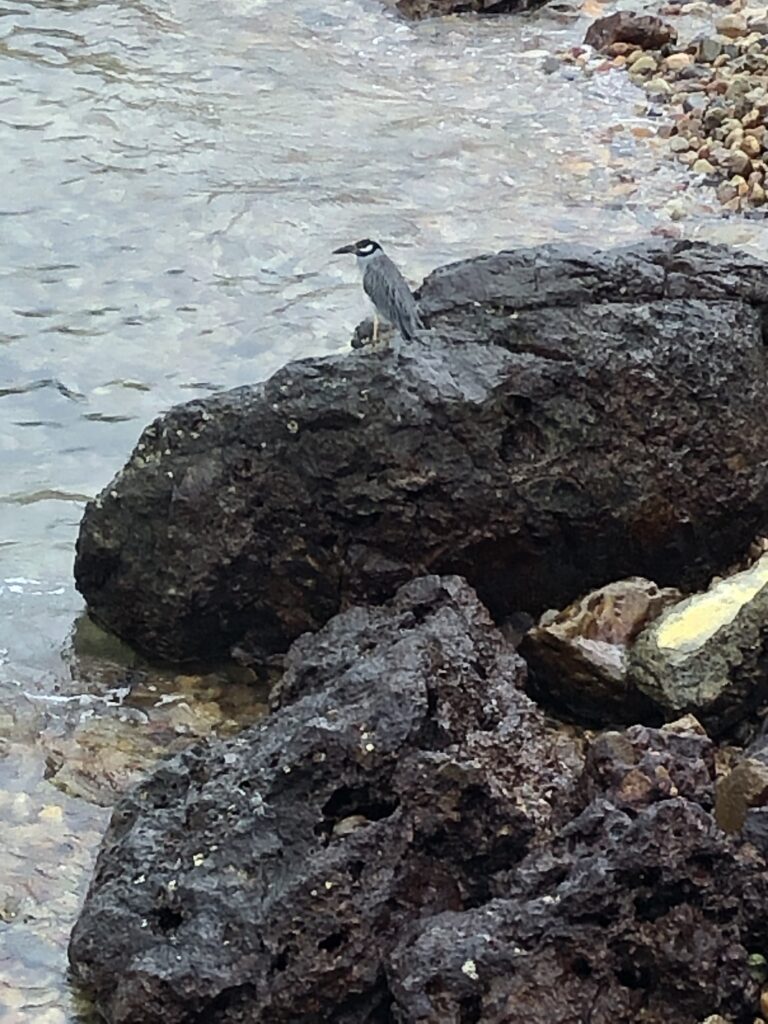
Yellow-crowned night heron poses 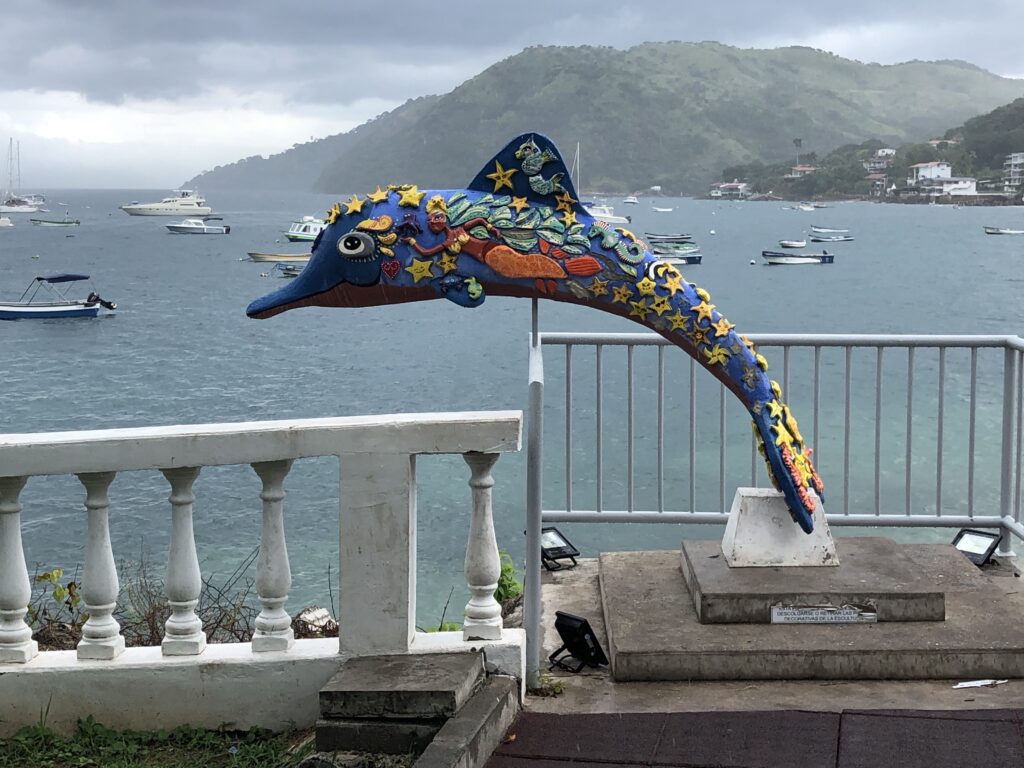
Not a real dolphin
Faith: One of the sites I really wanted to visit was the church of San Pedro, reported to be the second oldest church in Latin America. It’s not large, and it is well maintained. We were there the day before Mother’s Day—a big, national holiday in Panama—and the church was filled with flowers of all colors and varieties. A couple of gentlemen were sprucing up a small statue of the Virgin Mary. I didn’t want to be too intrusive into a holy site, so I just took one quick photo of the interior. It was a beautiful little place.
Big ships: As we ferried back to the city, I stood in the stern with Kevin, and we snapped photos and then more photos of the big ships waiting to go through the canal. I’ll share some of those photos here. Sigh. I love big ships.
Doggie Day Care: Just a quick word on how Tiki spent the day, since we didn’t feel like we could leave her alone in the apartment for more than 9 hours. If you know Tiki, you know she is not a beach dog. Dogs are allowed on the ferry, but she would have hated just about everything about the trip, from the sand, which would have been impossible to get out of her coat, to the stray dogs—she’s a dog snob—to the rainstorm. It turns out the vet we visited when we first got to Panama, SuperPet, also has lodging and daycare. They picked her up in their cute little SuperPet van, took care of her all day, and brought her back to us once we got back to the apartment. One of the vet techs who is Panamanian went to college in New York. She is completely bilingual and is our lifeline when it comes to taking care of the dog. Bob, Tiki, and I love Anabella, and we love SuperPet.
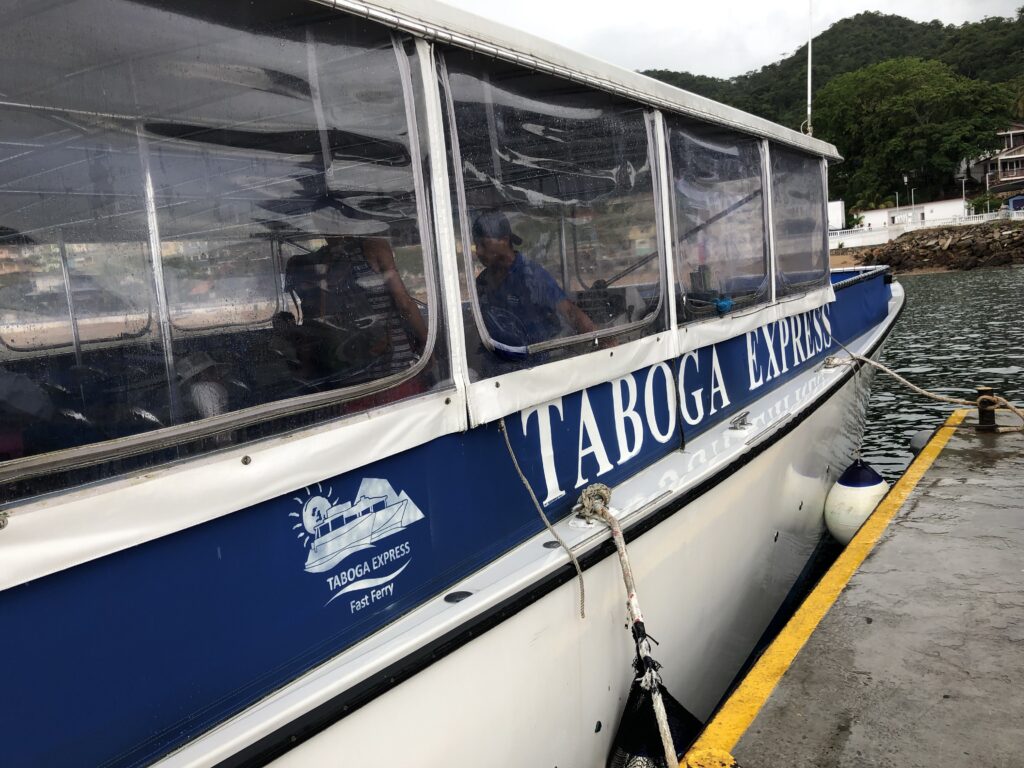
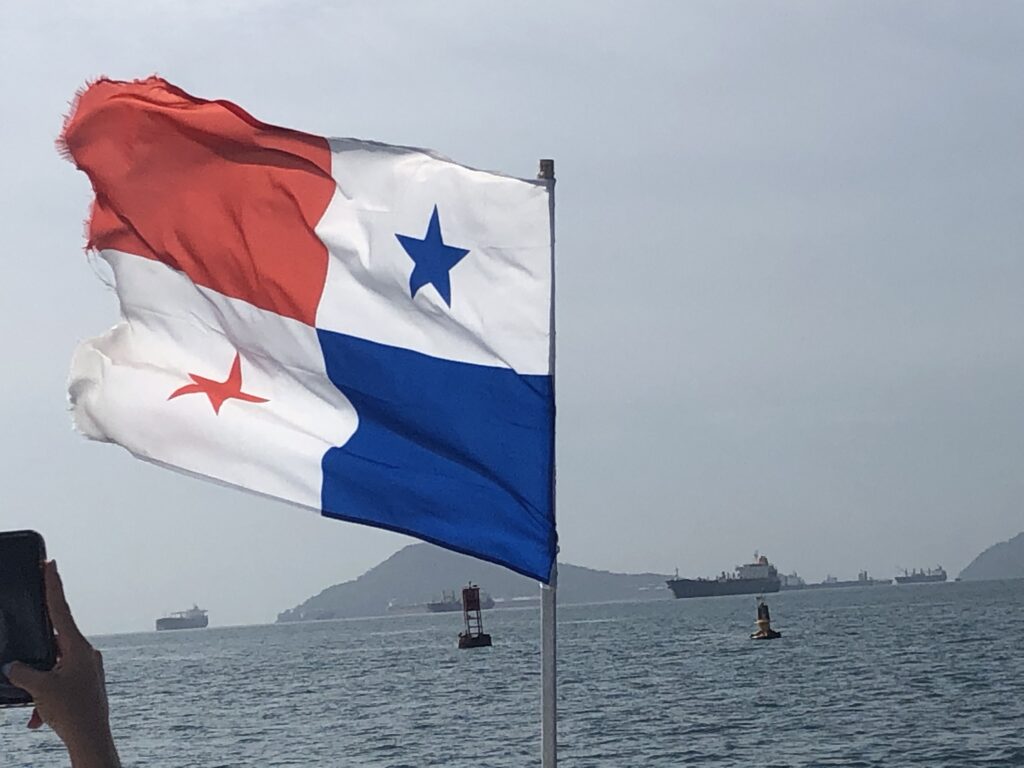
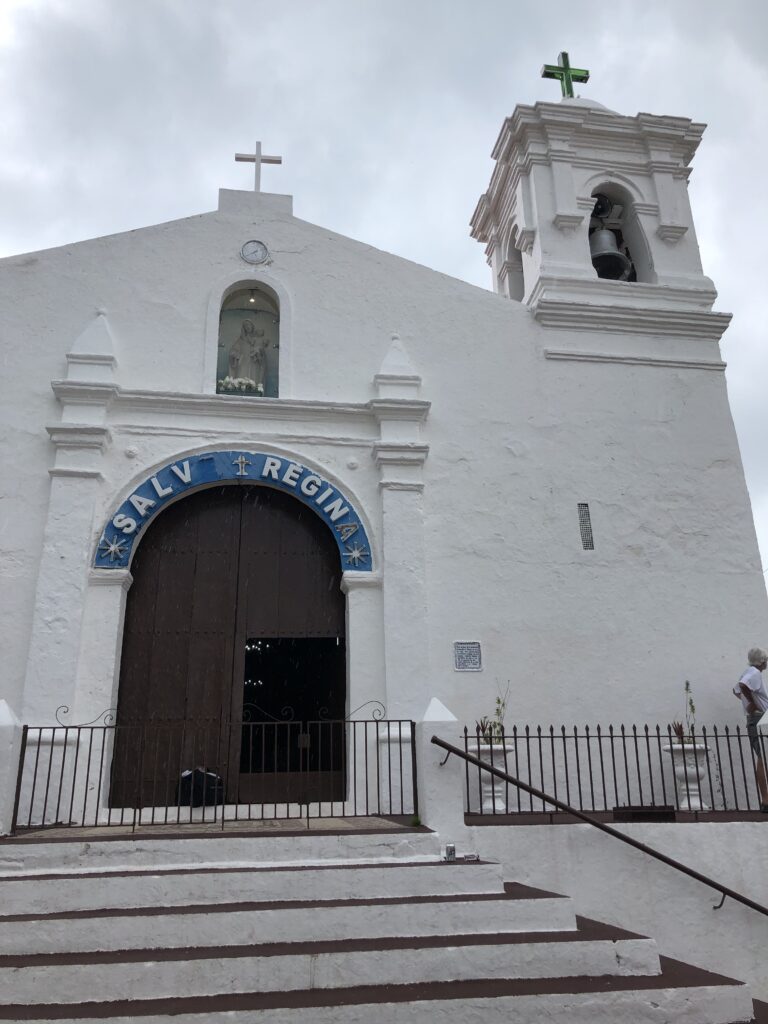
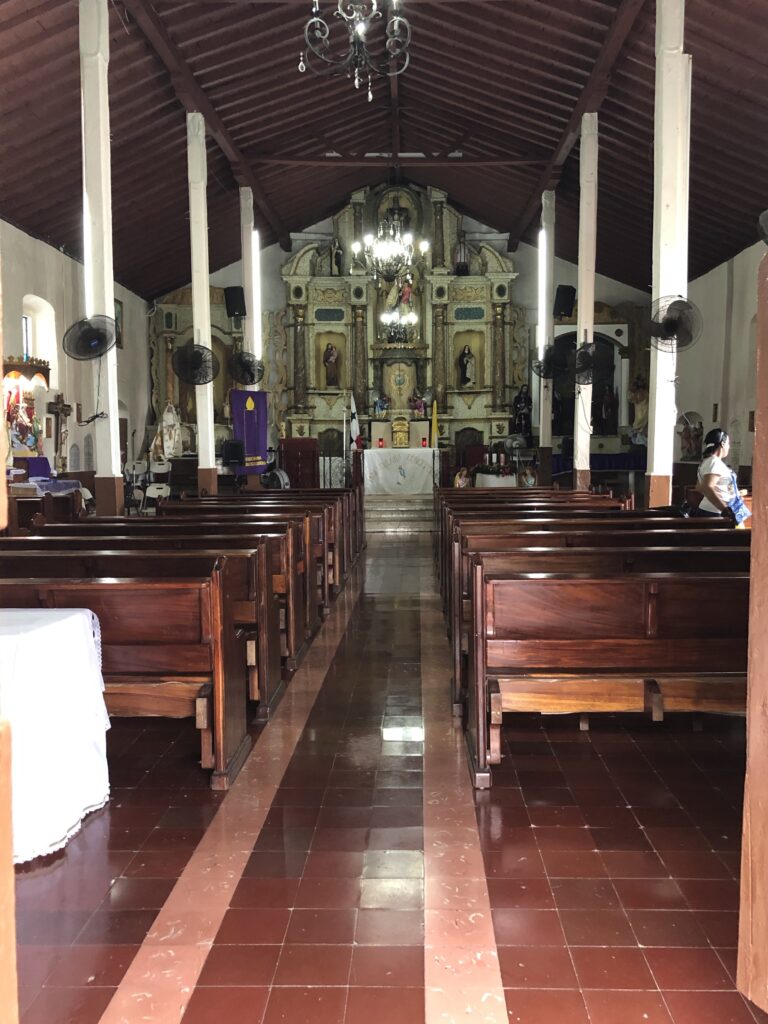
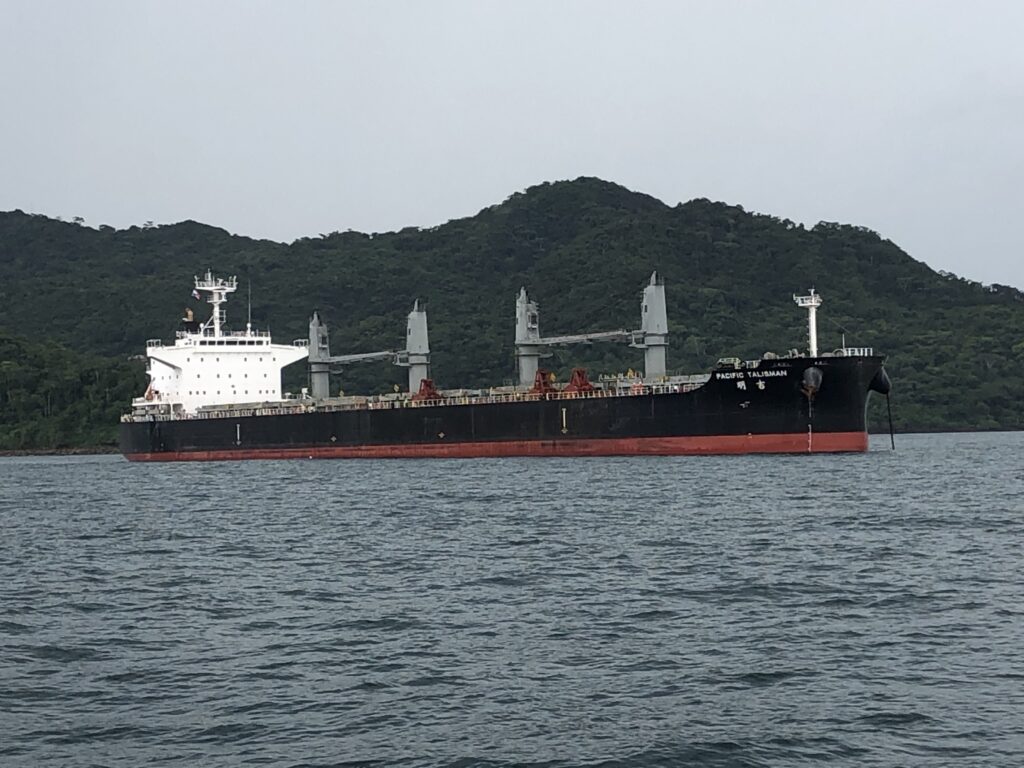
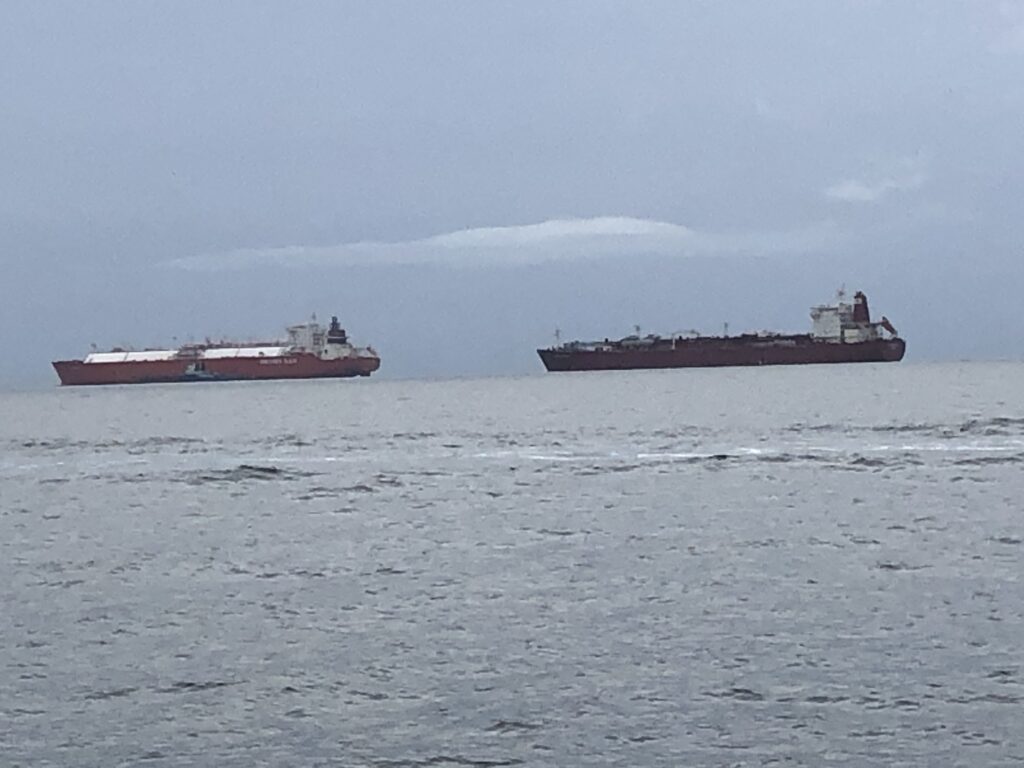
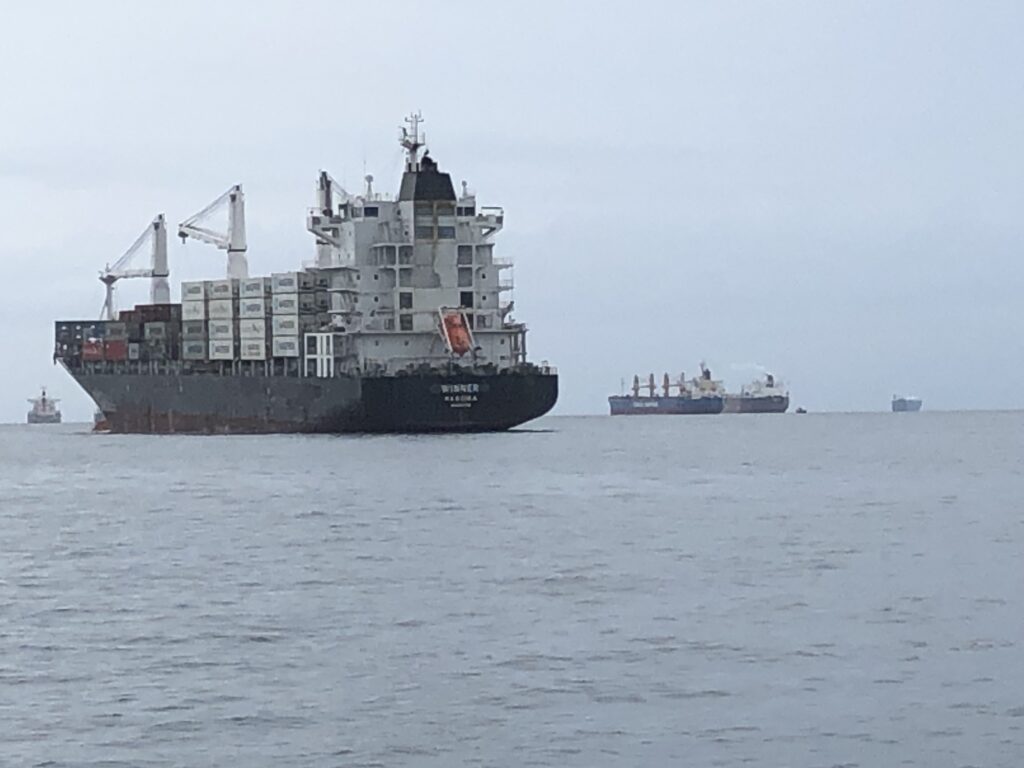
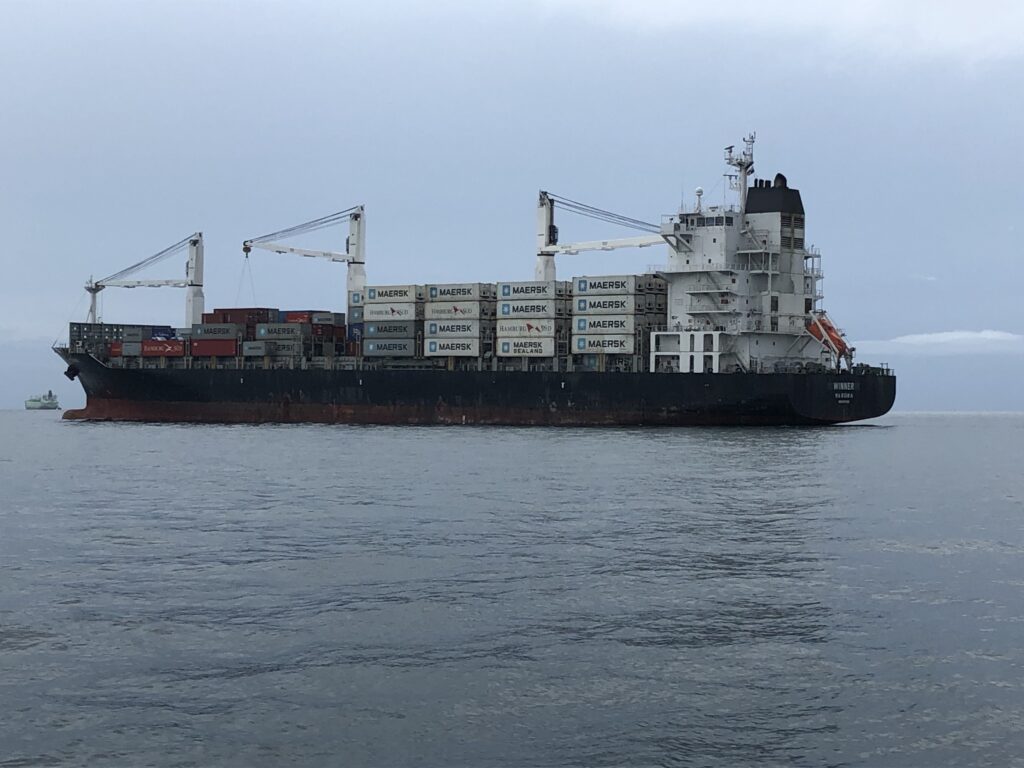
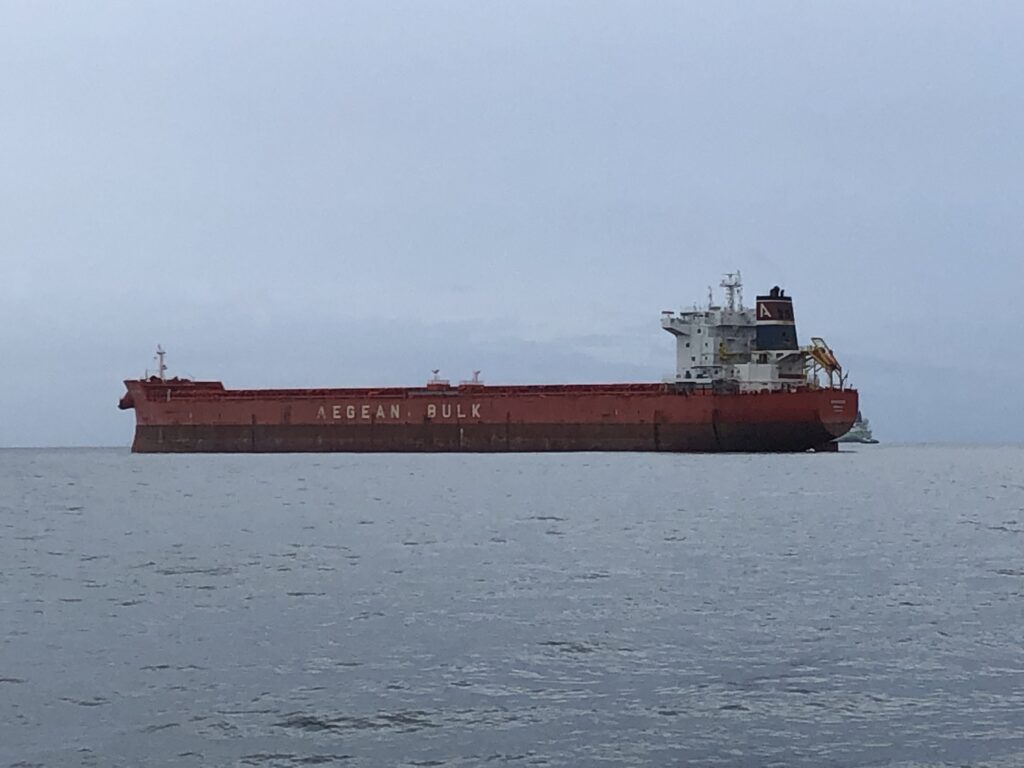
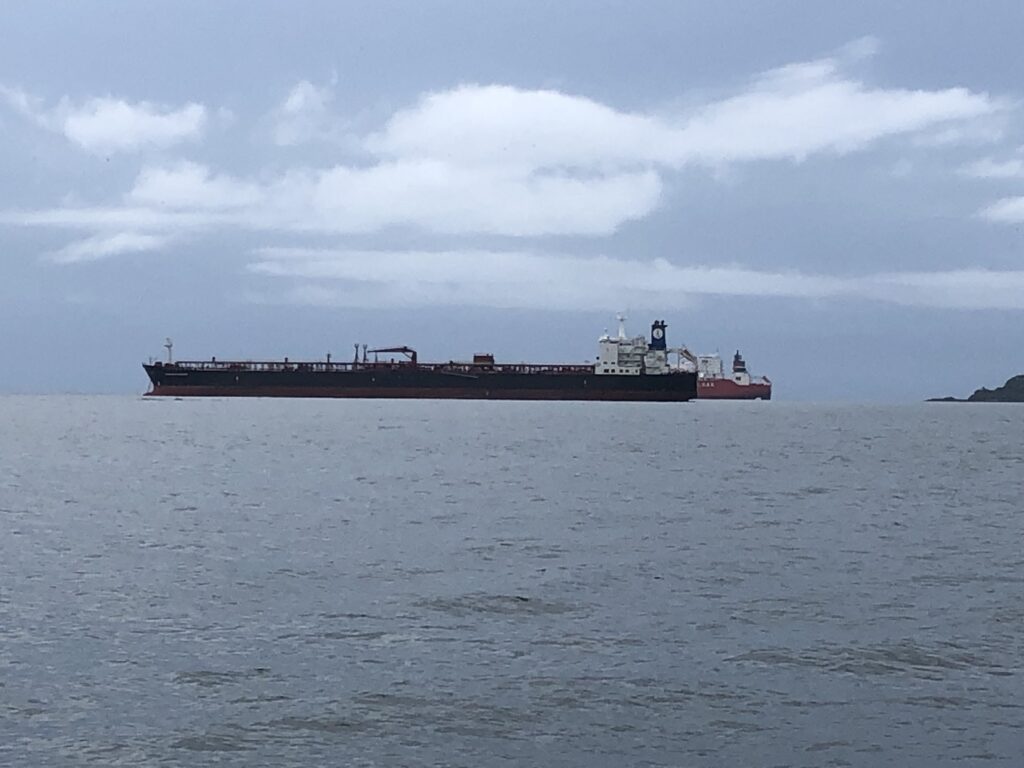
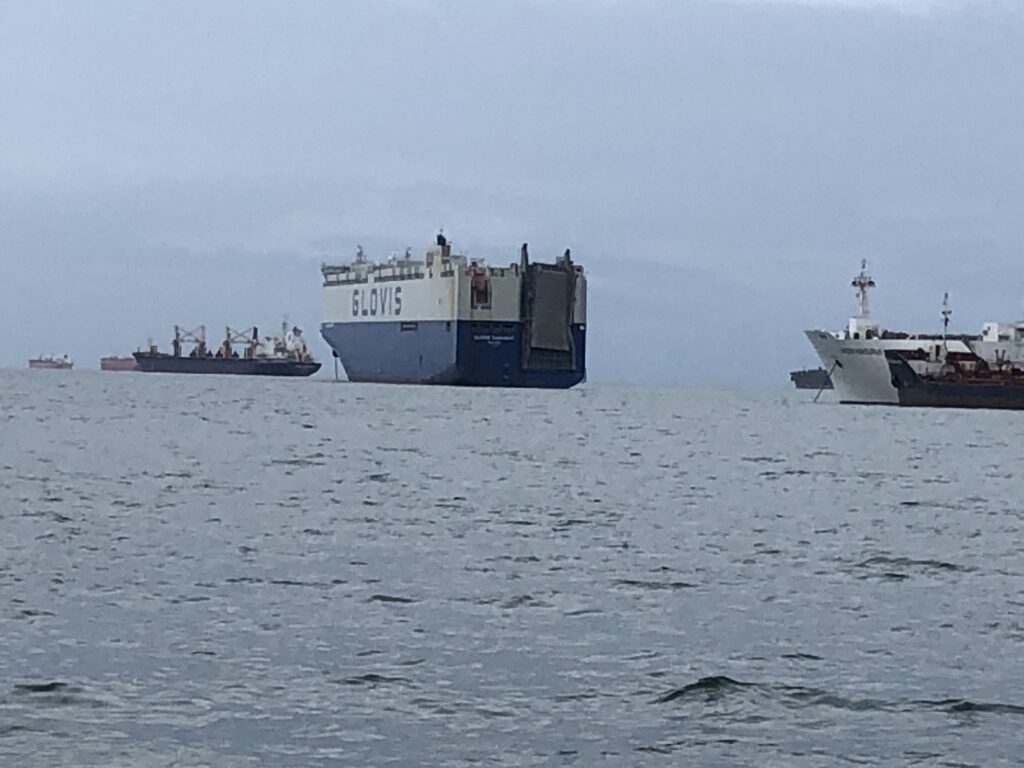

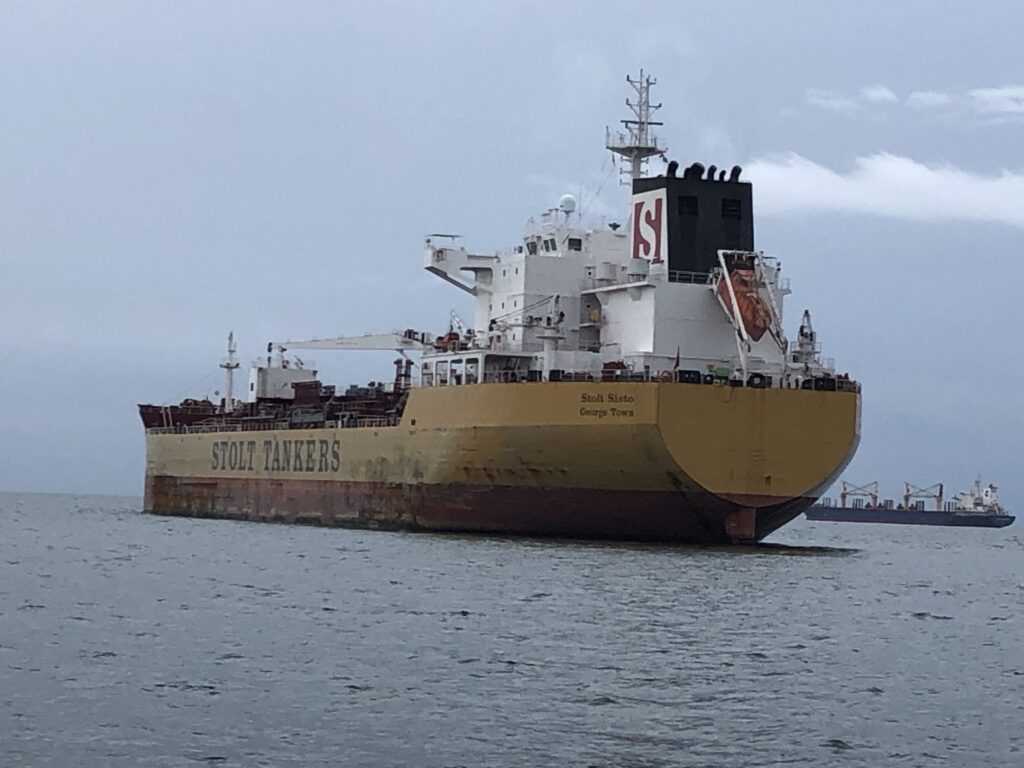
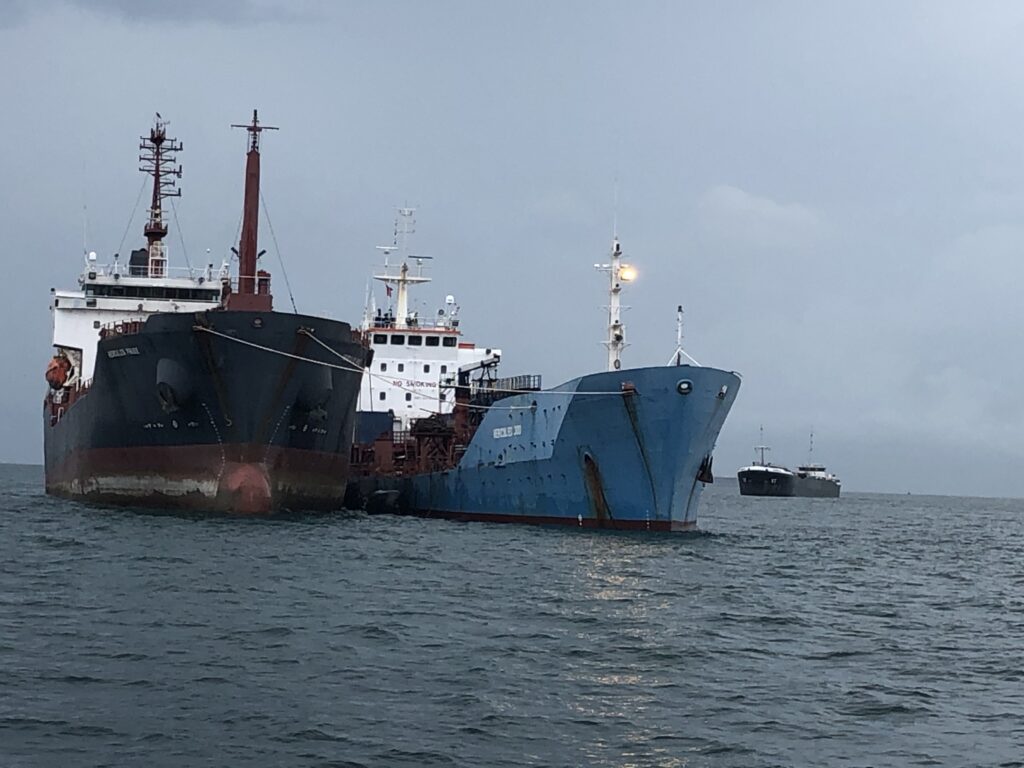
Sounds like a fun place to visit. So many birds! I am learning a lot.